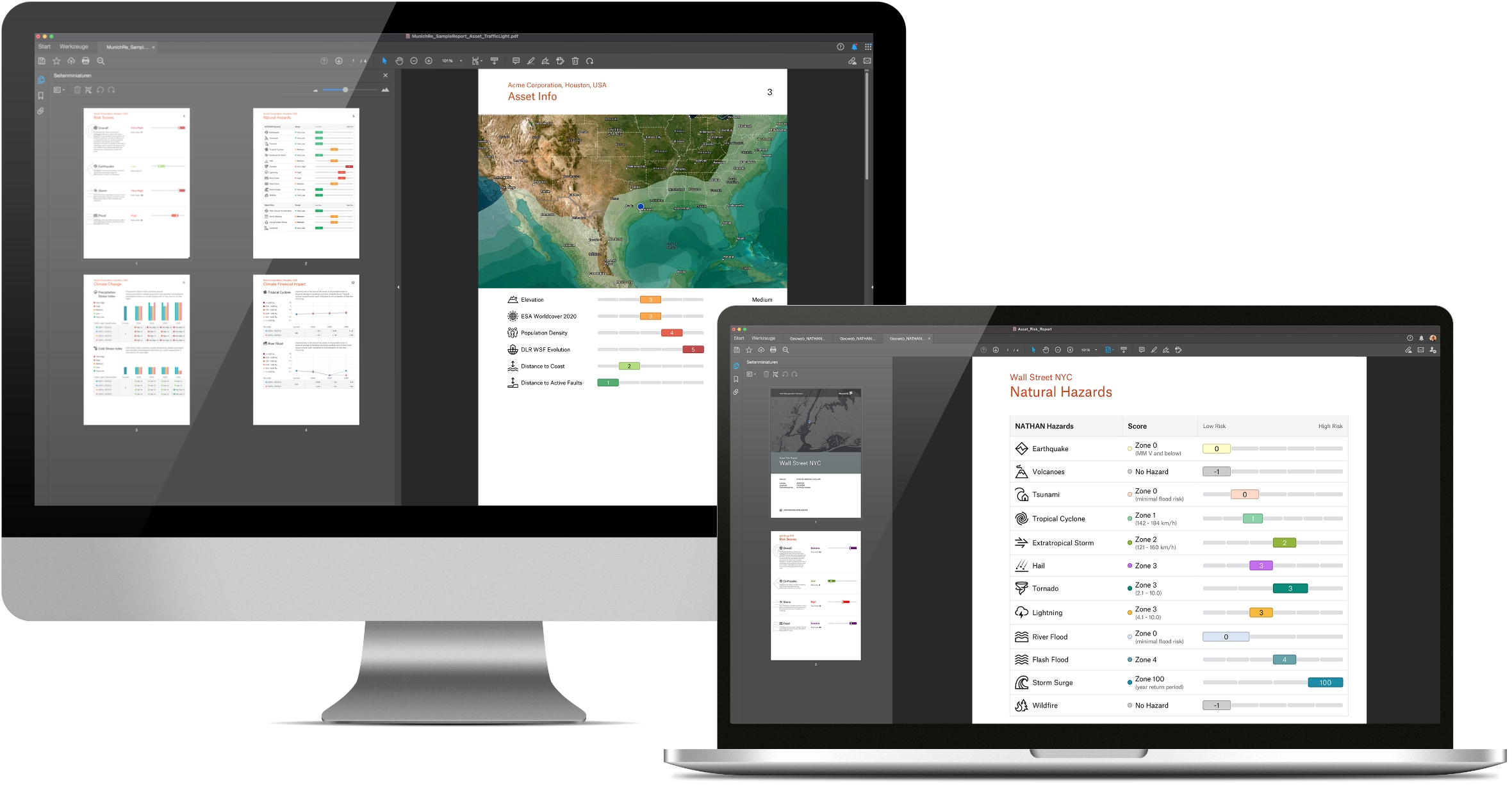
Elevate your reporting with premium climate risk data
Meet increasing regulatory and voluntary requirements through reliable information and transparency
properties.trackTitle
properties.trackSubtitle
The severe impacts of climate change are creating multiple challenges for businesses across all sectors. Rising temperatures, changing weather patterns and the increase in extreme climate-related disasters are adding new physical risks to your business.
And increasing regulatory and stakeholder requirements are putting additional pressure on you to provide greater transparency on your exposure to climate risks. According to an EY survey, 86% of the corporate executives and managers who responded to the 2022 EY Long-Term Value and Corporate Governance Survey say that a focus on environmental, social and governance (ESG) issues, and sustainable, inclusive growth has been critical to building trust with stakeholders in today’s uncertain times.* Reporting on climate risk is therefore no longer a possibility, it’s becoming a constant requirement.
*EY - Global | How can corporate reporting bridge the ESG trust gap?
Location Risk Intelligence helps you to meet your obligations for full and transparent reporting and disclosure
With Location Risk Intelligence you can clearly assess the risks posed by climate change on the basis of highly up-to-date, resilient data and thus meet the growing demands on your reporting at all times, especially in terms of greater transparency.
Instead of personal estimates, you meet the increasing pressure from a wide range of stakeholders such as investors, regulators and climate activists, with facts which fully disclose your company's exposure to climate change risks.
High-quality data and features to support you
High quality data analysis
Identify, measure, and disclose the required information based on reliable climate risk data
Climate-relevant factors
Broad coverage of required physical climate risk types, projection years and climate scenarios
Report at a click
Out-of-the-box reporting capabilities in line with legal requirements and internal guidelines
Based on the latest scientific insights
Based on the latest scientific research, your data creates confidence among your stakeholders
In-depth expertise
Munich Re has over 50 years’ experience in climate and hazard risk assessment
Clariant Ltd – one of the world’s leading specialist chemical companies – is already successfully incorporating climate change into its business. Get the case study now!

Our TCFD reporting not only serves to analyse our risk exposure, but also drives strategic decisions at Clariant, as changing environmental conditions can consciously inform decision-making and enable future competitive advantages.
There is a growing demand for greater transparency on climate-related risks. Are you ready?
A range of initiatives are driving the need for companies to understand and disclose the physical risks posed by climate change. National and regional regulators have also issued guidelines or regulations requiring companies to disclose their exposure to climate risks. Location Risk Intelligence provides you with the best support for all types of climate-related reporting, such as …
- CSRD Reporting
Analyse and disclose climate-related physical risks and site-specific impacts for your business and value chain in low or high emission climate scenarios, as per the EU Directive - IFRS S2 Reporting
Identify and report on climate-related physical risks to which your company is exposed in accordance with explicit metrics listed in sector-specific appendices - TCFD Reporting
Identify and assess climate-related physical risks and opportunities, and analyse site-specific exposure to various acute and chronic hazards in accordance with multiple IPCC-compliant climate scenarios - Swiss Climate Ordinance
Identify and assess climate-related physical risks and opportunities and analyse site-specific exposure to various acute and chronic hazards in accordance with multiple IPCC-compliant climate scenarios - EU Taxonomy
Assess the alignment of your actions with the taxonomy, meeting climate protection or adaptation criteria while demonstrating compliance with Do No Significant Harm criteria - Financial Conduct Authority (UK)
Identify and assess climate-related physical risks and opportunities and analyse site-specific exposure to various acute and chronic hazards in accordance with multiple IPCC-compliant climate scenarios - OSFI B15 (Canada)
Financial Institutions are provided with reliable data to report and disclose on climate-related physical risks supporting the development of greater resilience to and the management of these risks - SB 261 (California)
Ensure readiness by assessing climate-related physical risks and financial impacts for operations doing business in California. Prepare disclosures aligned with TCFD or IFRS S2 to demonstrate good-faith compliance under evolving CARB guidance

Download our whitepaper, developed in partnership with Stakeholder Reporting, to learn how to comply with reporting and understand company-specific climate risks.
Embrace the future with confidence, powered by Location Risk Intelligence data-driven insights. Book your demo today to start your risk-aware reporting.

Our highly developed solutions for reporting


